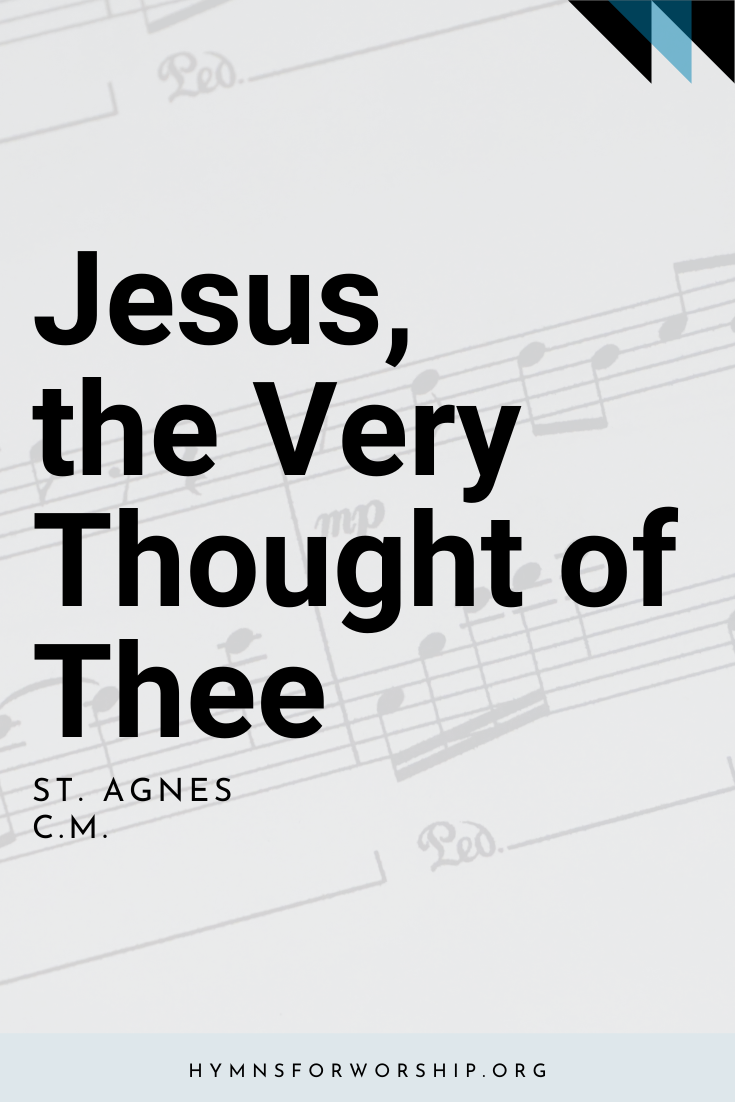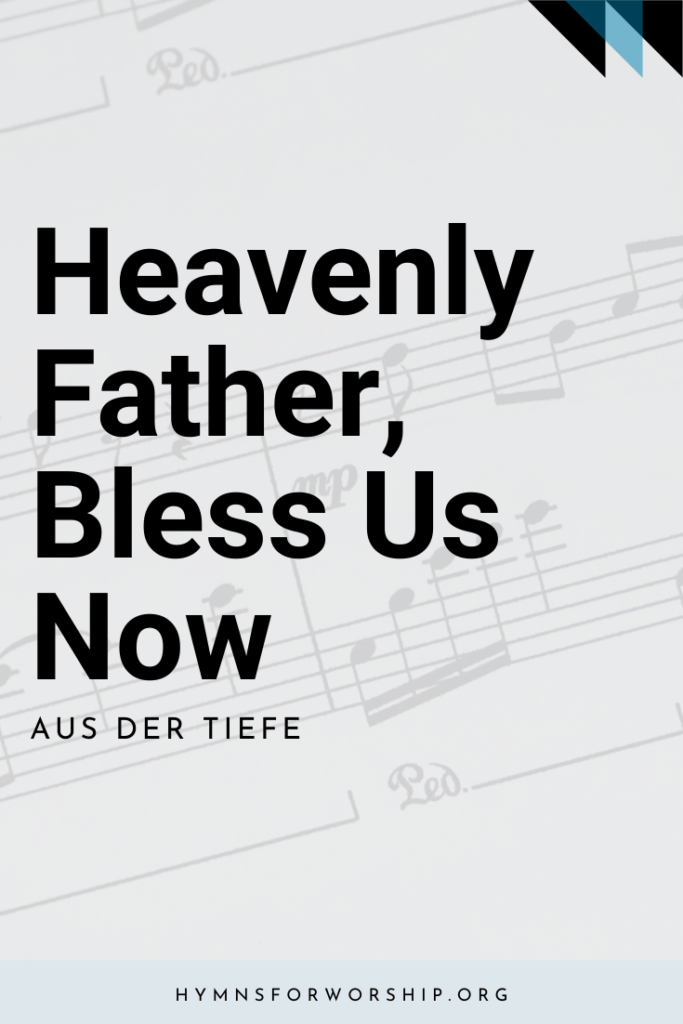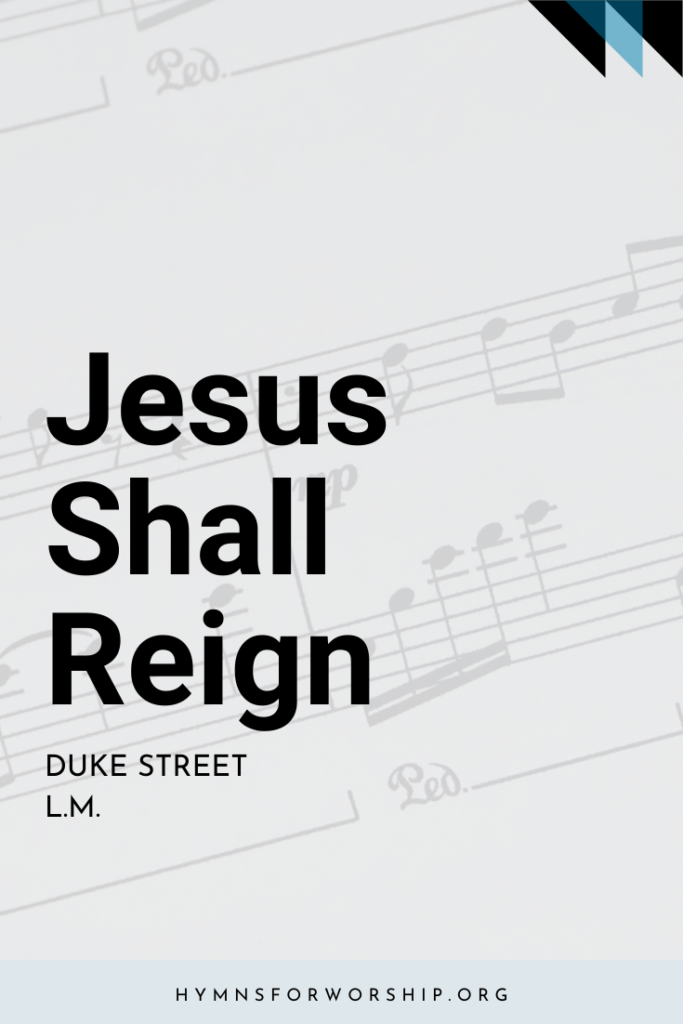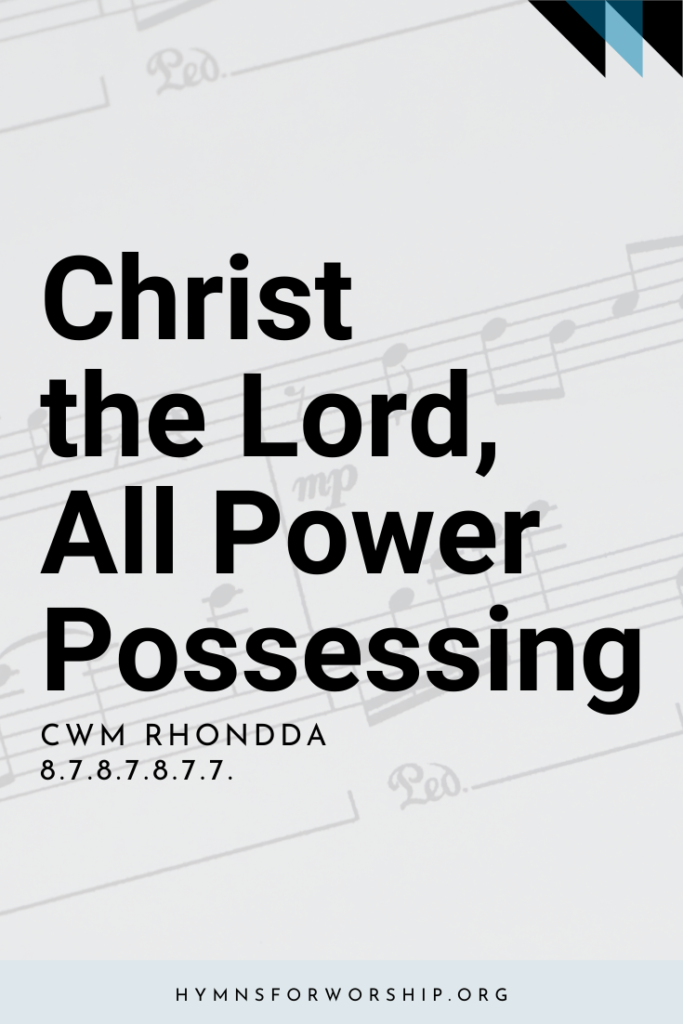JESUS CHRIST >> GLORY & PRAISE
SDAH 241
Jesus, the very thought of thee
with sweetness fills the breast;
but sweeter far thy face to see,
and in thy presence rest.


Text
1
Jesus, the very thought of thee
with sweetness fills the breast;
but sweeter far thy face to see,
and in thy presence rest.
2
No voice can sing, no heart can frame,
Nor can the memory find
A sweeter sound than Jesus’ name,
The Savior of mankind.
3
O hope of every contrite heart!
O joy of all the meek,
to those who fall, how kind thou art!
How good to those who seek!
4
But what to those who find? Ah, this
nor tongue nor pen can show;
the love of Jesus, what it is,
none but his loved ones know.
5
Jesus, our only joy be thou,
as thou our prize wilt be;
Jesus, be thou our glory now,
and through eternity.

Hymn Info
Biblical Reference
(b) Mark 1:21
Author
Attributed to Bernard of Clairvaux (1091-1153)
Translator
Edward Caswall, 1849 (1814-1878)
Hymn Tune
ST. AGNES
Metrical Number
C.M.
Composer
John B. Dykes (1823-1876)
Year Composed
1866
Hymn Score
[tnc-pdf-viewer-iframe file=”https://hymnsforworship.org/wp-content/uploads/2017/01/SDAH241.pdf” width=”900″ height=”850″ download=”true” print=”true” fullscreen=”false” share=”true” zoom=”true” open=”true” pagenav=”true” logo=”true” find=”true” language=”en-US” page=”” default_zoom=”auto” pagemode=””]
Piano Accompaniment
[wonderplugin_audio id=”241″]
Notes
Get to know the hymns a little deeper with the SDA Hymnal Companion. Use our song leader’s notes to engage your congregation in singing with understanding. Even better, involve kids in learning this hymn with our homeschooling materials.
A name is usually associated with a prominent feature or characteristic. What comes as the most prominent in your mind when you think of the name Jesus? (Lesson 4, 2nd Quarter 2021 – Sunday, Yahweh and the Abrahamic Covenant, 4/18/2021)





